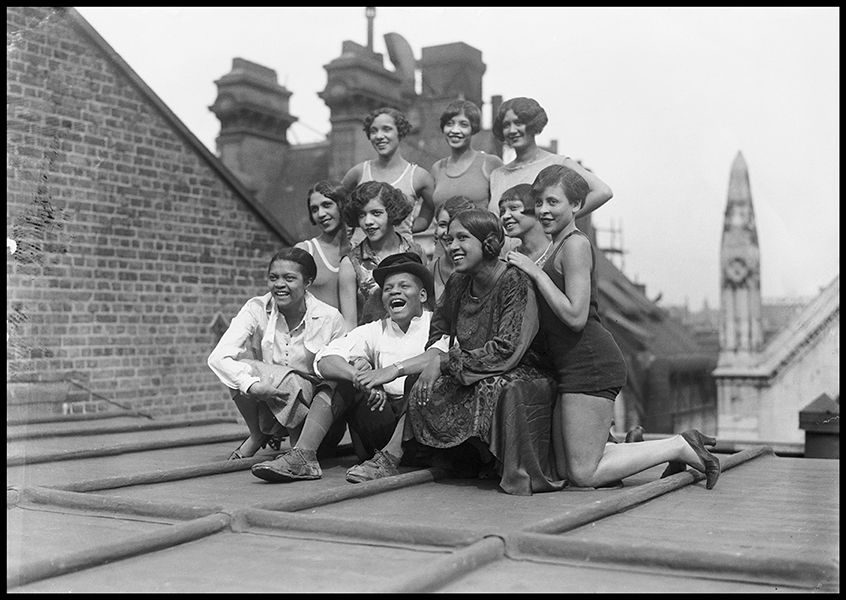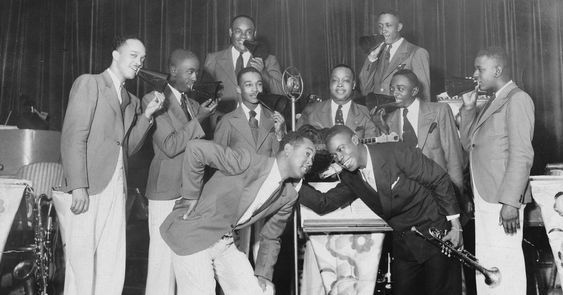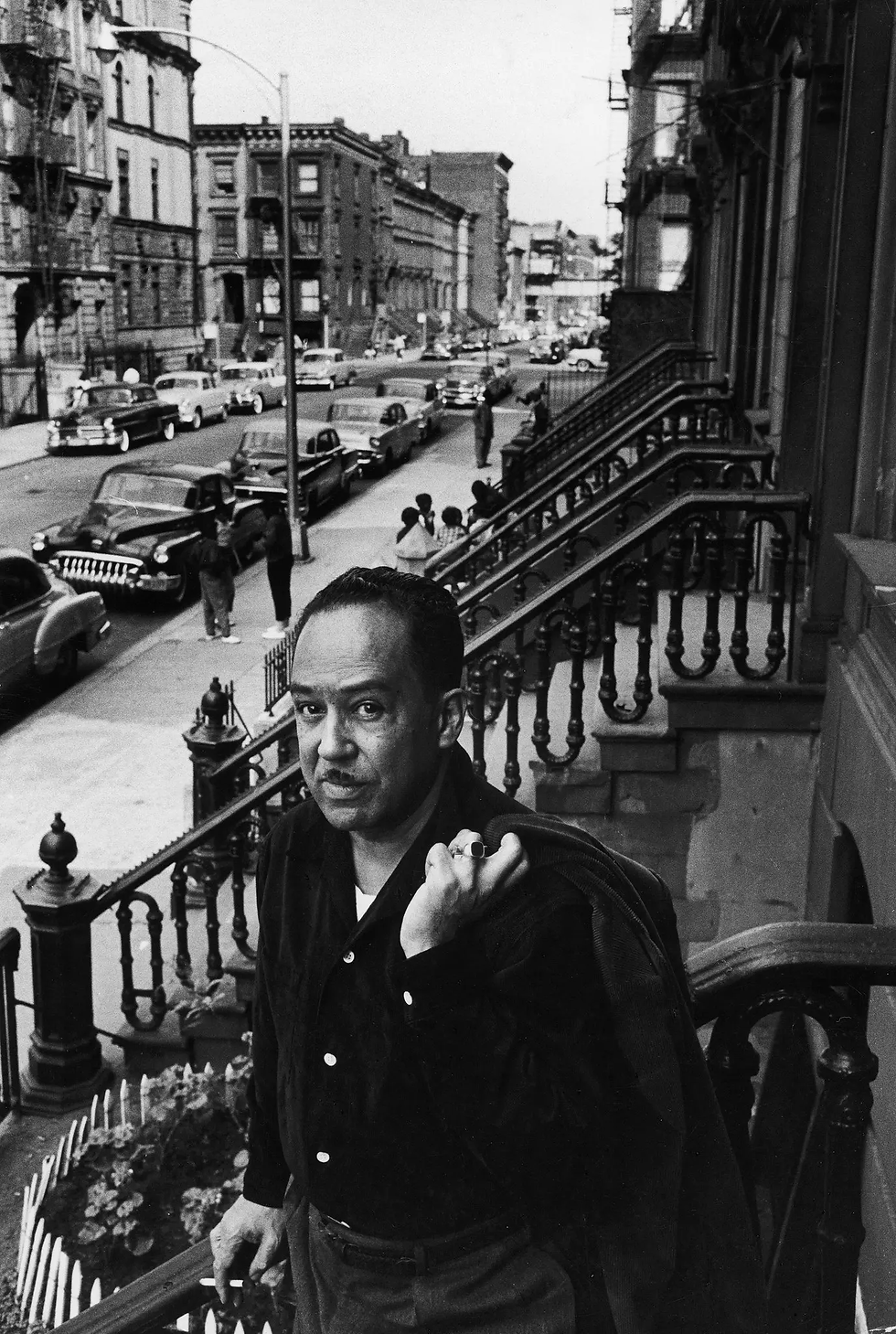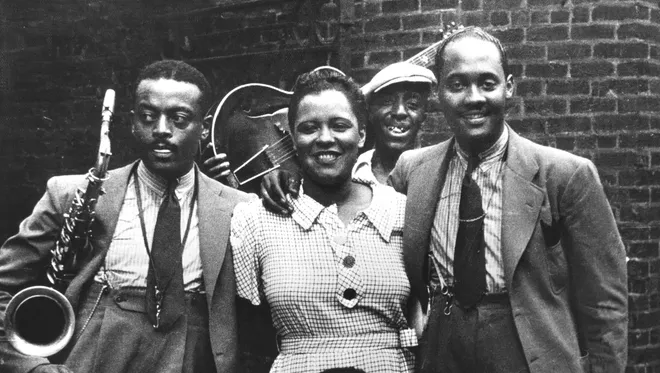Jazz Age Series: Harlem Renaissance
- Aylin Usta

- Mar 13, 2022
- 7 min read
Updated: Sep 21, 2024
Foreword
One of the most important eras of American history, the Jazz Age started after World War I and ended with the outbreak of the Great Depression in 1929. Nevertheless, this era offered new images and terms both literary and culturally in a wide spectrum. In this period, the United States went through a huge transition and began to prosper in music, literature, economy, policy, and technology. In 'The Roaring Twenties', known also as 'the Golden Age', divergent cultures gathered into one pot and shaped this period by their own essential qualifications. Effects of this age have been shaped the American culture dramatically and, still have been maintaining its importance. Hence, it is crucial to gain knowledge from the Jazz Age in order to understand American culture and literature. During each article, this series will cover the Jazz Age in terms of different backgrounds to enlarge readers' perspectives.
Jazz Age Series is mainly divided into five chapters including:
Jazz Age Series: Harlem Renaissance
Warning: There is offensive terminology in this article, but it is repeated solely for historical purposes.
Jazz Age Series: Harlem Renaissance
Harlem Renaissance, also known as the "New Negro", was a time that started in 1921 and counted as the first prominent literary and cultural evolvement in African American history. The black community of America composed works of art in Harlem. As Cheryl Wall asserts in her work The Harlem Renaissance: A Very Short Introduction: ''Harlem was the dream capital of black America'' (Wall, 53). This period was evaluated as the golden age in African American culture’s formation in terms of literature, music, art, stage performance, and dance. The main aim of the Harlem Renaissance was not only to show black art in American history, they wanted to gather the unity of the black community as well. Through art, African- American artists asserted to add pride in black life and identity. They also targeted reviving black art in Harlem.

Figure 1: King Oliver and his Creole Jazz Band
The roots of the Harlem community were based on the Great Migration that happened in the environment, especially in Chicago, Los Angeles, Detroit, Philadelphia, and New York. With the downfall of the plantation economy and the approaching western frontier immigration, the United States abruptly changed into a habitation of city dwellers. Thousands of African Americans came to the Harlem section of Manhattan in search of finding jobs. In a short time, Harlem turned into a destination point for all African American backgrounds. The Great Migration paved the way for talented and brighter African Americans to come to Harlem. As Cheryl Wall underlines: "Harlem was the physical embodiment of the spirit of the "New Negro", and it was indisputably modern" (Wall, 55). These artists and scholars shared resentful common experiences of slavery, racism, and discrimination. With these accumulations of oppression against their race, they prompted themselves the need to construct a "New Negro" identity that associated with their right to freedom of expression. Thus, Harlem became an intellectual, cultural, and financial place for African Americans. Emily Bernard emphasizes in The Cambridge Companion to the Harlem Renaissance:
"The New Negro was more than a persona; he was an idea, an ideological construction. The New Negro was invented, in part, by blacks attempting to correct the negative stereotypes about them that were already in play by the time they arrived in the New World" (Bernard, 28).

Figure 2: Blackbirds of 1926
The "New Negro" decided to praise, support, and accept the things white personas rejected. In this way, they produced jazz and swing, also embraced other works of art such as opera, dance, poetry, painting, and prose. These art options provided them with a space for reflecting their identity. They proved that their rich heritage more than assumptions and misconceptions. As James Ciment said in Encyclopedia of the Jazz Age: From the End of World War I to the Great Crash: "The Jazz Age was the decade of the New Negro —urbanized, literate, and assertive—and the Harlem Renaissance, a black cultural efflorescence centered in the Harlem section of New York City." (Ciment, 474). The artists put forward the idea of what was meant to be black in America or how was felt to live in America as a black person. Thus, Harlem Renaissance gave them a chance to bring their national identity from such a perspective. It became a literary tool for African Americans to write themselves in terms of their point of view. That is why the presence of Harlem could be accepted as the black intellectual capital of its era.

Figure 3: Louis Armstrong on WMSB Radio
There were numerous creators in Harlem, but the most notable contributors were Langston Hughes, Nella Larsen, Claude McKay, Countee Cullen, Jean Toomer, Gwendolyn B. Bennett, Alain Locke, W. E. B. Du Bois and Zora Neale Hurston. These artists were accepted inside of prominent figures in Harlem. Especially Langston Hughes who was a leader of this reformation. Hughes was the primer of a new black vernacular lyric poetry, especially the genre of blues poetry. His first book of poetry The Weary Blues was the first published collection of poems.
‘’Sweet Blues!
Coming from a black man’s soul.
O Blues!
In a deep song voice with a melancholy tone
I heard that Negro sing, that old piano moan—
“Ain’t got nobody in all this world,
Ain’t got nobody but ma self.
I’s gwine to quit ma frownin’
And put ma troubles on the shelf.”
(Hughes, 20)
The poem emphasizes the blues coming from black heritage. There is a tribute to African heritage by making it visible with lyrics. The poem describes the African American singer who is singing blues. Thus, each line becomes a representation of black history and its invention which is Jazz music. The singer underlines the subjective consciousness of folk music that he pursues throughout his black identity. This is a stage where he is aware and, in a need of representation with Jazz music. Also, he tried to create awareness in his essays like The Negro Artist and the Racial Mountain: "We younger Negro artists who create now intend to express our individual dark-skinned selves without fear or shame. If white people are pleased we are glad. If they are not, it doesn’t matter. We know we are beautiful. And ugly too’’ (Hughes, 180,181). He handles the issue of surpassing the boundaries that are put into them by making art. The key point is being proud to have a black identity, and being indifferent against the critics. He reveals his excitement about the reborn of Harlem and the construction of the "New Negro". He prompts the action that Black artists dare to face society and rebel against the norms it forced towards them.

Figure 4: Langston Hughes
Although most female writers were concerned about stereotypes that impeded them, Zora Neale Hurston acted in an outspoken way in her black protagonists. As Amy Berke underlines: "Like many artists in the Harlem Renaissance in the 1920s, Hurston’s art was essentially apolitical. Hurston’s work celebrated racial pride and African-American culture without any filtering, and characters’ power came from their own self discoveries and their own inner resources" (Berke, 708). Rather than specifically focusing on African American community, Hurston aimed in her novels to show conflict within the life itself by using black characters in her work. Her novel Their Eyes Were Watching God is a significant masterpiece of its time. The character Janie Crawford openly searches for love and sexual desires with men no matter how class and age they have. As mentioned in the novel: "Two things everybody’s got tuh do fuh theyselves…They got tuh go tuh God and they got tuh find out about livin’ fuh theyselves’’ (Hurston, 226). She says every individual has to discover their path by searching in the life. The quote associates the desire to reach love that Janie seeks. Even though her grandmother and husbands try to oppress her in a dogmatic personality, she uses her will to leave behind those stereotypes. Janie surpasses her grandmother's confined vision of a black woman's life. She grabs her liberation depending on her choices and promotes that idea to the readers.
Alain Locke brought a guide to the artists who struggled in Harlem. His essay Enter The New Negro describes how artists could overcome prejudice while gaining political status in society. "The intelligent Negro of today is resolved not to make discrimination an extenuation for his shortcomings in performance, individual or collective; he is trying to hold himself at par, neither inflated by sentimental allowances nor depreciated by current social discounts’’ (Locke, 2). Locke gives the idea of the "New Negro" is no longer has to be an outsider from society because of their skin color. He says that black Americans must deny the role white society embedded in them and embrace the attitude of Blackness when they replaced themselves against oppression. Dominating white oppression was their priority while creating a New Negro image.

Figure 5: Singer Billie Holiday with musicians Ben Webster and Johnny Russell
To sum up, Harlem gave black artists a unique voice to express their identity without concern. It provided them to reveal their race and recapture the integrity of the Black American. They showed to the White society their voice which was loud and unique. The Harlem Renaissance obtained the right to condemn society for its discrimination and blindness. Also, it contributed many African-American artists and musicians to reach a larger audience. It shaped a new movement for African Americans in society. As Lawrence Jackson mentioned in: ''The Harlem lava had cooled into a bedrock symbol of black literature'' (Jackson, 250). America changed with the impacts of Harlem and took a new perspective from their works. Artists worked together to ruin the stereotypes and inspired each other to create different images that had never been seen before. It was the most significant era for black artists not only for crushing white supremacy, but they also pondered upon gathering solidarity among themselves. It was an important step for the next generations, also it was undeniable that its impact brought awareness to American society.
References
Berke, Amy, et al. Zora Neale Hurston. Writing the Nation: A Concise Introduction to American Literature 1865 to Present, University of North Georgia Press, 2015, pp. 708–708.
Bernard, Emily. The Renaissance and the Vogue. The Cambridge Companion to the Harlem Renaissance, edited by George Hutchinson, Cambridge University Press, Cambridge, 2007, pp. 28–40. Cambridge Companions to Literature.
Ciment, James. Encyclopedia of the Jazz Age: From the End of World War I to the Great Crash, Sharpe Reference, an Imprint of M.E. Sharpe, Inc., 2013, p. 474.
Hughes, Langston. The Black Aesthetic, Anchor Books, 1972, pp. 180–181.
Hughes, Langston. The Weary Blues, Knopf; Revised ed. Edition. Feb. 10, 2015.
Hurston, Zora N. Their Eyes Were Watching God, Amistad; First Hardcover Edition. Oct. 24, 2000.
Locke, Alain. Enter the New Negro. National Humanities Center Resource, Mar. 1925, http://nationalhumanitiescenter.org/pds/maai3/migrations/text8/lockenewnegro.pdf.
Wall, Cheryl A. The Harlem Renaissance a Very Short Introduction, Oxford University Press, New York, NY, 2016, pp. 53–53.
Image References
Figure 1: Blackbirds Of 1926. [Photography]. http://themissingchapter.co.uk/portfolio_page/blackbirds-london-1926/
Figure 2: King Oliver And His Creole Jazz Band. [Photography]. https://syncopatedtimes.com/king-olivers-creole-jazz-band/
Figure 3: Langston Hughes. [Photography]. https://www.nytimes.com/2018/08/09/arts/langston-hughes-birth-date.html
Figure 4: Louis Armstrong On WMSB Radio. [Photography]. https://vintagedancer.com/1920s/1920s-black-fashion-african-american-clothing-photos/
Figure 5: Singer Billie Holiday with musicians including Ben Webster and Johnny Russell. [Photography]. https://www.usatoday.com/story/news/2015/02/03/black-history-harlem-renaissance/22825245/







A very good music genre for bob the robber
New York City's premier software development in New York and design company building custom apps for high-growth companies
Enjoy every moment through raft wars to make the exciting adventure at sea more interesting and record more memorable memories.
This helpful for my fellow students doing NHD on the harlem renaissance
It's certainly a very important movement for this period. Thank you for your work.